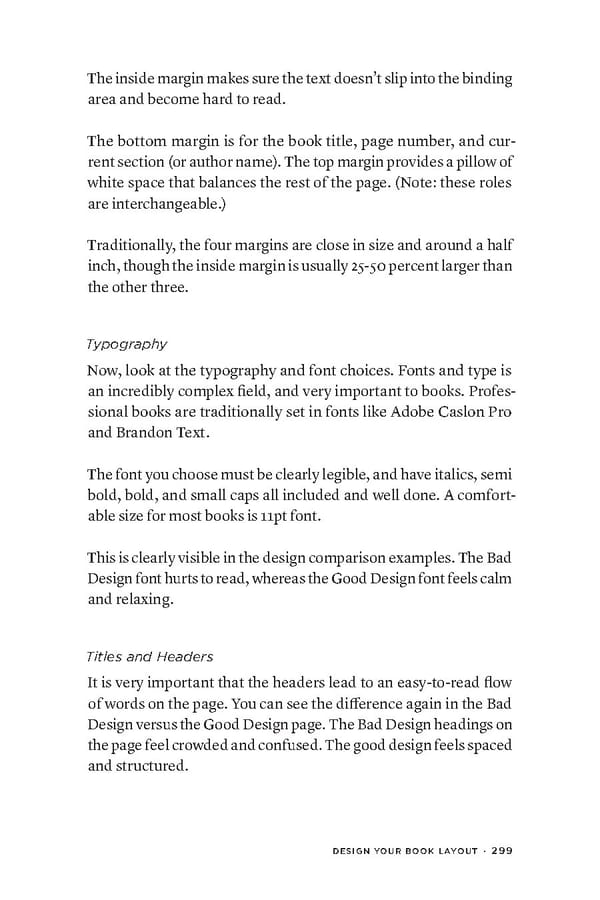The inside margin makes sure the text doesn’t slip into the binding area and become hard to read. The bottom margin is for the book title, page number, and cur- rent section (or author name). The top margin provides a pillow of white space that balances the rest of the page. (Note: these roles are interchangeable.) Traditionally, the four margins are close in size and around a half inch, though the inside margin is usually 25-50 percent larger than the other three. Typography Now, look at the typography and font choices. Fonts and type is an incredibly complex field, and very important to books. Profes- sional books are traditionally set in fonts like Adobe Caslon Pro and Brandon Text. The font you choose must be clearly legible, and have italics, semi bold, bold, and small caps all included and well done. A comfort- able size for most books is 11pt font. This is clearly visible in the design comparison examples. The Bad Design font hurts to read, whereas the Good Design font feels calm and relaxing. Titles and Headers It is very important that the headers lead to an easy-to-read flow of words on the page. You can see the difference again in the Bad Design versus the Good Design page. The Bad Design headings on the page feel crowded and confused. The good design feels spaced and structured. DESigN yOUr BOOk lAyOUT · 299
 The Scribe Method by Tucker Max Page 298 Page 300
The Scribe Method by Tucker Max Page 298 Page 300